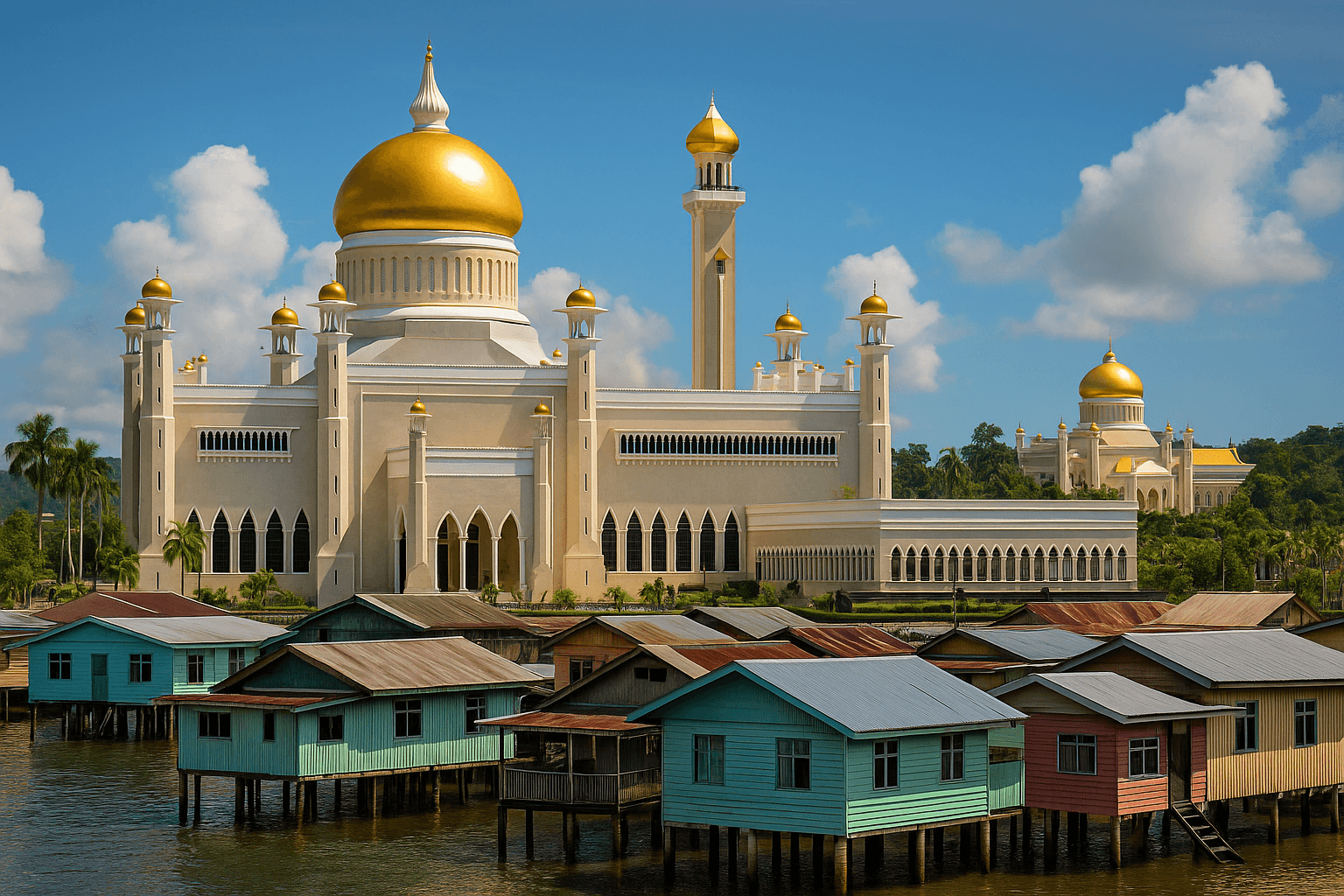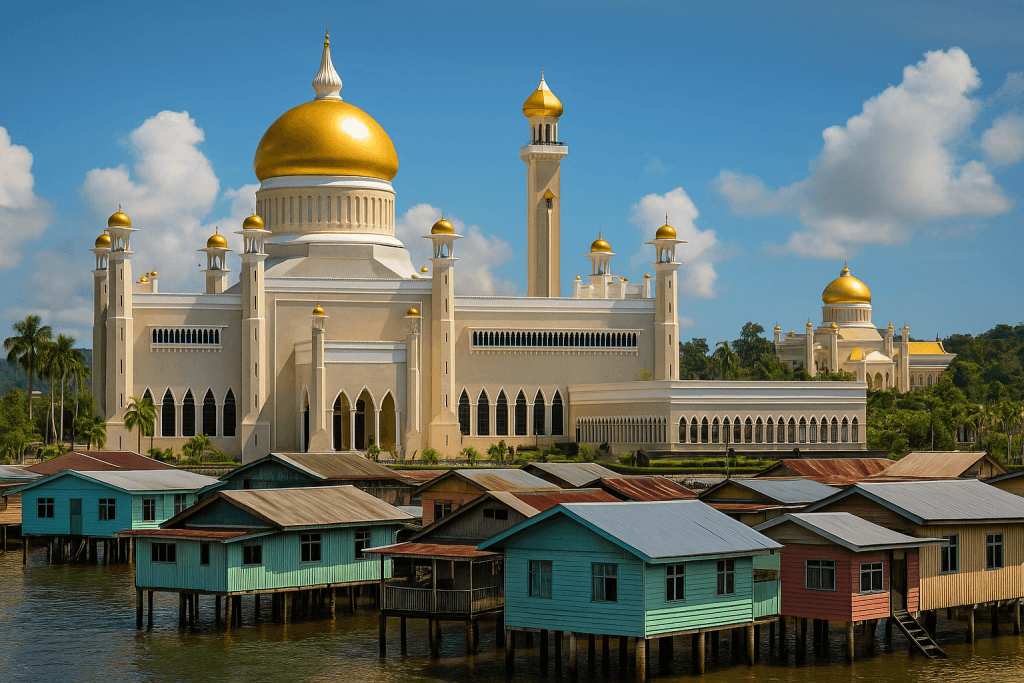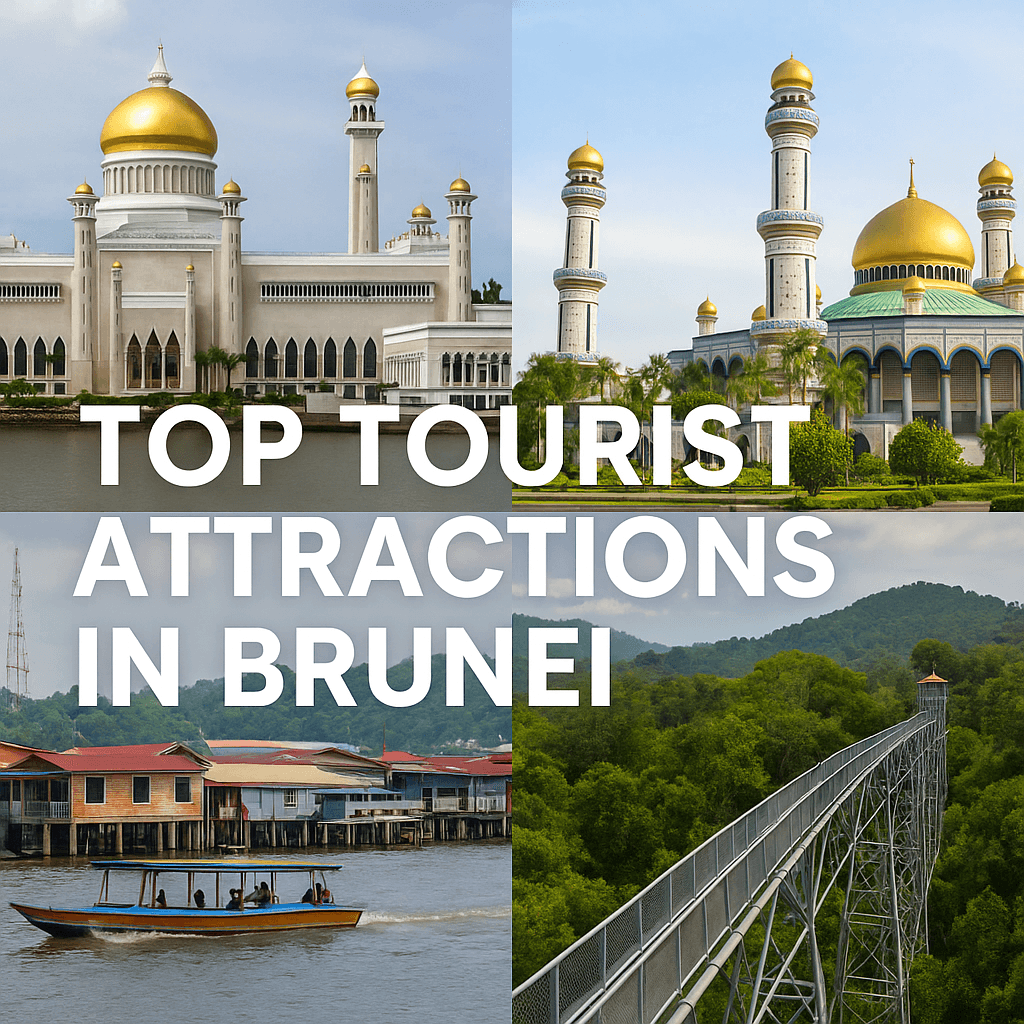Bandar Seri Begawan: The Heart and Capital of Brunei stands as a vibrant symbol of tradition, heritage, and modern development. This unique city, often simply referred to as Bandar, is not only the political and administrative capital of the Sultanate of Brunei but also the cultural heartbeat of the nation. Situated along the banks of the Brunei River, the city embodies the fusion of Islamic values, Malay traditions, and the royal legacy that defines Brunei Darussalam.
As the center of governance, commerce, and spirituality, Bandar Seri Begawan: The Heart and Capital of Brunei plays a vital role in shaping the nation’s identity. From its majestic mosques and floating villages to modern institutions and green landscapes, the city offers a fascinating glimpse into the life of a nation that treasures both its heritage and its future.

Historical Overview of Bandar Seri Begawan
The history of Bandar Seri Begawan: The Heart and Capital of Brunei stretches back centuries. Formerly known as Brunei Town, it was renamed in 1970 by Sultan Omar Ali Saifuddien III to honor his father, Begawan Sultan Sir Omar Ali Saifuddien Sa’adul Khairi Waddien, who was often referred to as the “Architect of Modern Brunei.” The renaming emphasized the importance of heritage and loyalty to the royal family.
Historically, the city was a thriving trading hub along Borneo’s northern coast. Merchants from China, the Malay Peninsula, and even the Middle East docked at the Brunei River, exchanging goods, culture, and ideas. The river itself became the lifeline of the community, with Kampong Ayer—Brunei’s famous water village—flourishing as a center of commerce and residence.
The Role of the Capital in Brunei’s Identity
Bandar Seri Begawan: The Heart and Capital of Brunei symbolizes the fusion of monarchy, religion, and tradition under the national philosophy of Melayu Islam Beraja (Malay Islamic Monarchy). This guiding principle influences governance, education, social life, and the cultural fabric of the capital. Every street, mosque, and public institution reflects the balance between deep respect for Islam, the continuity of the Malay heritage, and the leadership of the Sultan.
The city is not just a capital in a political sense; it is the cultural and spiritual core of the nation. The grand mosques dominate the skyline, reminding visitors and citizens alike of the central role faith plays in Brunei’s society. Simultaneously, its administrative buildings, museums, and heritage sites anchor the capital’s position as the nerve center of governance and culture.
Architectural Marvels of the Capital
Sultan Omar Ali Saifuddien Mosque
At the heart of Bandar Seri Begawan: The Heart and Capital of Brunei stands the Sultan Omar Ali Saifuddien Mosque, often hailed as one of the most beautiful mosques in Southeast Asia. Its golden dome, Italian marble minarets, and lagoon-like reflecting pool make it an architectural masterpiece. The mosque is both a place of worship and a symbol of Brunei’s Islamic identity and modern nationhood.
Jame’ Asr Hassanil Bolkiah Mosque
Another jewel of Islamic architecture, the Jame’ Asr Hassanil Bolkiah Mosque, was built to commemorate the current Sultan’s Silver Jubilee. Known for its 29 golden domes, it celebrates the 29th ruler of Brunei and exemplifies grandeur and devotion. It stands as a landmark not just in the capital but also in the entire nation.
Istana Nurul Iman
No exploration of Bandar Seri Begawan: The Heart and Capital of Brunei would be complete without mentioning Istana Nurul Iman, the Sultan’s official residence and the world’s largest residential palace. With over a thousand rooms and extensive ceremonial halls, it embodies the wealth, power, and continuity of the monarchy. While it is closed to the public for most of the year, its grandeur reinforces the city’s royal stature.
Kampong Ayer: The Water Village
Known as the “Venice of the East,” Kampong Ayer remains a living heritage of Bandar Seri Begawan: The Heart and Capital of Brunei. Stretching across the Brunei River, this water village is home to thousands of residents who live in stilt houses connected by wooden walkways and bridges. Despite its traditional design, the village is fully equipped with modern facilities including schools, mosques, shops, and even police stations.
Kampong Ayer represents continuity in Brunei’s cultural identity. It reflects how the capital blends traditional Malay lifestyle with modern conveniences. Tourists visiting this village witness a unique way of life that has remained resilient for centuries.
The Royal and Cultural Institutions
The Royal Regalia Museum
Located in the center of Bandar Seri Begawan: The Heart and Capital of Brunei, the Royal Regalia Museum houses artifacts, regalia, and exhibits celebrating the monarchy’s history. Visitors marvel at ceremonial items, the Sultan’s coronation throne, and gifts from world leaders. This museum serves as a reminder of the deep respect Bruneians hold for their monarchy.
Brunei History Centre
The Brunei History Centre, also situated in the capital, documents the lineage of the Sultanate, ancient treaties, and significant milestones. It highlights how Bandar Seri Begawan: The Heart and Capital of Brunei remains the custodian of the nation’s memory.
The Green Side of the Capital
Though small in size, the capital is remarkably green. Tasek Lama Recreational Park, one of the oldest nature reserves in the city, offers waterfalls, hiking trails, and picnic spots just minutes from the city center. Similarly, Eco Corridors and mangrove tours along the Brunei River highlight the government’s commitment to sustainability. This balance between urban life and nature makes Bandar Seri Begawan: The Heart and Capital of Brunei not only livable but also environmentally conscious.
The Economic Role of the Capital
As the hub of Brunei’s economic activity, Bandar Seri Begawan: The Heart and Capital of Brunei concentrates government institutions, financial services, and commercial enterprises. The city’s economy is closely tied to Brunei’s oil and gas wealth, but diversification initiatives are also visible in banking, tourism, education, and halal industries.
Markets and shopping complexes like Yayasan Sultan Haji Hassanal Bolkiah Complex provide retail opportunities, while night markets and traditional stalls ensure that cultural vibrancy coexists with economic development.
Education and Social Development
The capital is also the center of learning and social progress. Institutions such as Universiti Brunei Darussalam and international schools are based in or around the city. This concentration of education strengthens the role of Bandar Seri Begawan: The Heart and Capital of Brunei as a hub for intellectual and social development. Schools, cultural centers, and libraries play their part in shaping a knowledgeable and culturally aware society.
Festivals and Celebrations in the Capital
The capital is the epicenter of Brunei’s national celebrations. Events like Hari Raya Aidilfitri, the Sultan’s birthday, and National Day feature grand parades, open palaces, and community gatherings. Streets and landmarks in Bandar Seri Begawan: The Heart and Capital of Brunei are illuminated during these occasions, bringing together citizens and visitors in celebration of unity and identity.
Modern Development and Infrastructure
While respecting tradition, the city has embraced modernization. Wide boulevards, administrative complexes, bridges, and modern housing developments coexist with traditional architecture. Infrastructure in Bandar Seri Begawan: The Heart and Capital of Brunei continues to expand, making it not only a cultural beacon but also a functional modern capital.
Tourism and International Appeal
Tourism plays a growing role in the capital’s identity. Travelers visit Bandar Seri Begawan: The Heart and Capital of Brunei to experience its mosques, palaces, museums, and water villages. The capital also serves as a gateway to the wider natural attractions of Brunei, from rainforests to beaches. International hotels, guided tours, and cultural programs position the city as a welcoming destination for global visitors.
Daily Life in the Capital
For locals, Bandar Seri Begawan: The Heart and Capital of Brunei offers a harmonious lifestyle. Streets are safe, communities are close-knit, and the cost of living is manageable due to government subsidies. Residents enjoy a blend of traditional kampong values with modern conveniences, making the city not only a political capital but also a cultural home.
Conclusion
Bandar Seri Begawan: The Heart and Capital of Brunei is more than just the administrative seat of government. It is the embodiment of Brunei’s heritage, spirituality, and aspirations. From its golden-domed mosques and royal palaces to its water villages and green parks, the capital represents the nation’s identity and future. It stands as a bridge between tradition and modernity, offering residents and visitors a unique experience of culture, faith, and community.
By exploring Bandar Seri Begawan: The Heart and Capital of Brunei, one understands the essence of Brunei itself: a nation proud of its past, confident in its present, and hopeful for its future.


